All of the sensors and input switches can be diagnosed using a scan tool. Following is a short description of how the sensors and switches can be diagnosed by using a scan tool. The scan tool can also be used to compare the values for a normal running engine with the engine you are diagnosing.
Engine Coolant Temperature (ECT) Sensor
The engine coolant temperature sensor is a thermistor (a resistor which changes value based on temperature) mounted in the engine coolant stream.

Low coolant temperature produces a high resistance (100,000ohms at -40°C/-40°F) while high temperature causes low resistance (70ohms at 130°C/266°F).
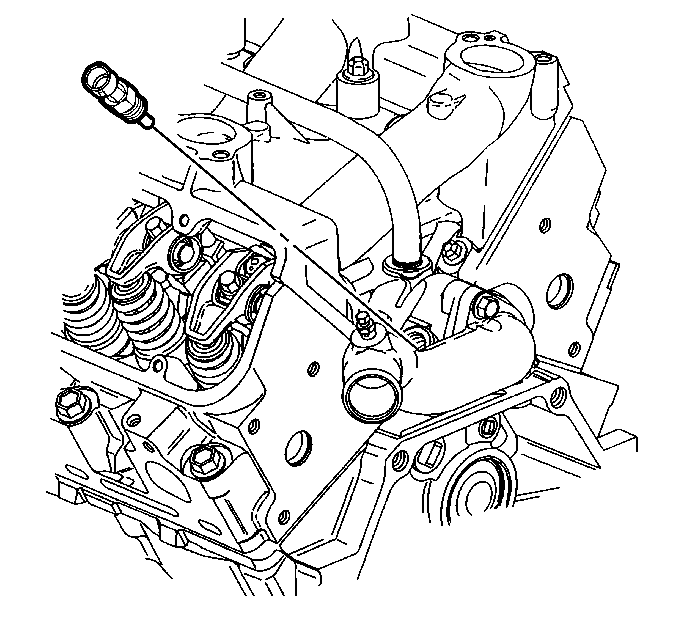
The PCM supplies a 5.0 volt signal to the engine coolant temperature sensor through a resistor in the PCM and measures the voltage. The voltage will be high when the engine is cold, and low when the engine is hot. By measuring the voltage, the PCM calculates the engine coolant temperature. Engine coolant temperature affects most systems the PCM controls.
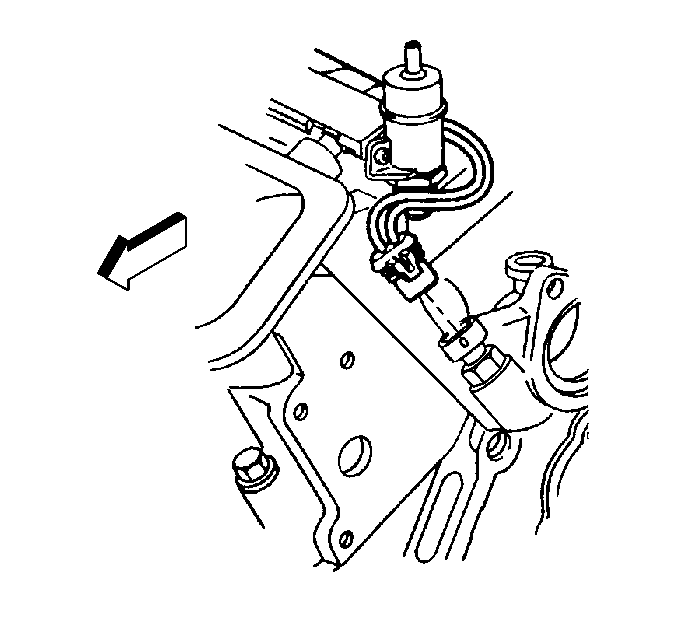
The scan tool displays engine coolant temperature in degrees. After engine startup, the temperature should rise steadily to about 90°C (194°F) then stabilize when thermostat opens. If the engine has not been run for several hours (overnight), the engine coolant temperature and intake air temperature displays should be close to each other. A hard fault in the engine coolant sensor circuit should set DTC P0117 Engine Coolant Temperature (ECT) Sensor Circuit Low Voltage , or DTC P0118 Engine Coolant Temperature (ECT) Sensor Circuit High Voltage , an intermittent fault should set a DTC P1114 Engine Coolant Temperature (ECT) Sensor Circuit Intermittent Low Voltage , or DTC P1115 Engine Coolant Temperature (ECT) Sensor Circuit Intermittent High Voltage . The DTC Diagnostic Aids also contains a chart to check for sensor resistance values relative to temperature.
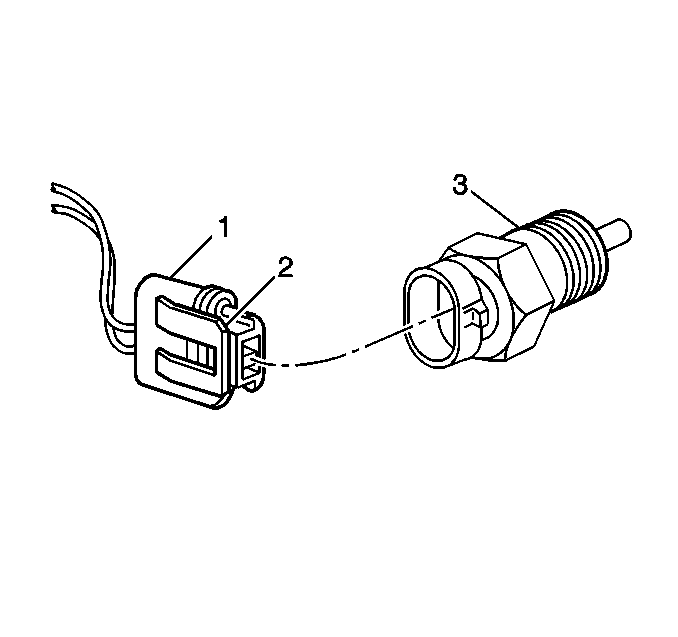
The ECT sensor(3) also contains another circuit which is used to operate the engine coolant temperature gauge located in the instrument panel.
Mass Air Flow (MAF) Sensor
The Mass Air Flow (MAF) sensor measures the amount of air which passes through it. The PCM uses this information to determine the operating condition of the engine, to control fuel delivery.
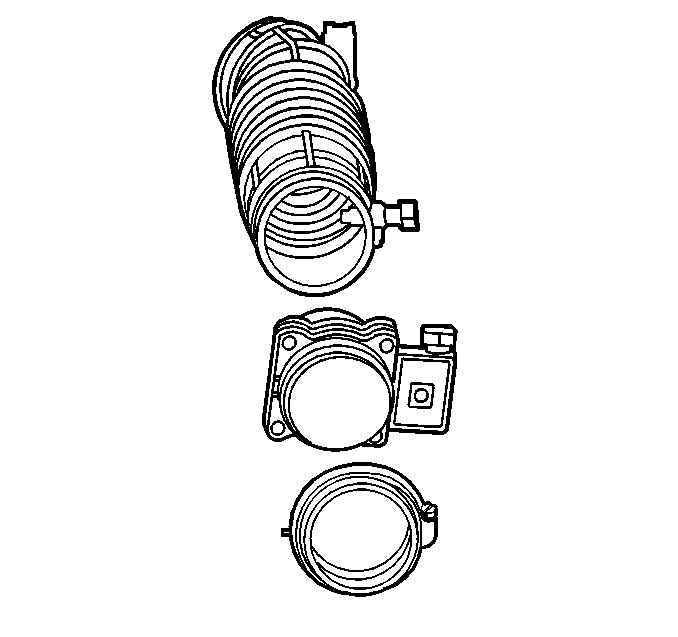
A large quantity of air indicates acceleration, while a small quantity indicates deceleration or idle.
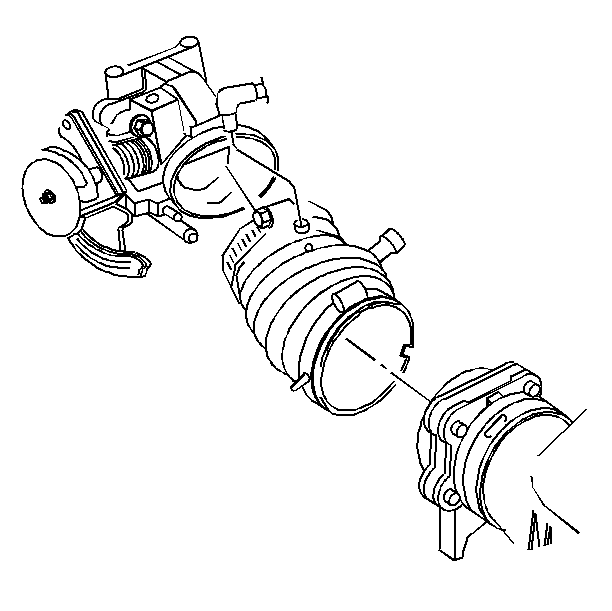
The scan tool reads the MAF value and displays it in grams per second (gm/s). At idle, it should read between 4gm/s to 6gm/s on a fully warmed up engine. Values should change rather quickly on acceleration, but values should remain fairly stable at any given RPM. A failure in the MAF sensor or circuit should set DTC P0101 Mass Air Flow (MAF) Sensor Performance , DTC P0102 Mass Air Flow (MAF) Sensor Circuit Low Frequency , or DTC P0103 Mass Air Flow (MAF) Sensor Circuit High Frequency .
Intake Air Temperature (IAT) Sensor
The Intake Air Temperature (IAT) Sensor is a thermistor which changes value based on the temperature of air entering the engine. Low temperature produces a high resistance (100,000 ohms at -40°C/-40°F), while high temperature causes low resistance (70 ohms at 130°C/266°F).
The PCM supplies a 5.0 volt signal to the sensor through a resistor in the PCM and measures the voltage. The voltage will be high when the incoming air is cold, and low when the air is hot. By measuring the voltage, the PCM calculates the incoming air temperature. The IAT sensor signal is used to adjust spark timing according to incoming air density.

The scan tool displays temperature of the air entering the engine, which should read close to ambient air temperature when the engine is cold, and rise as the underhood temperature increases.

If the engine has not been run for several hours (overnight) the IAT sensor temperature and engine coolant temperature should read close to each other. A failure in the IAT sensor circuit should set DTC P0112 Intake Air Temperature (IAT) Sensor Circuit Low Voltage or DTC P0113 Intake Air Temperature (IAT) Sensor Circuit High Voltage .
Manifold Absolute Pressure (MAP) Sensor
The Manifold Absolute Pressure (MAP) Sensor responds to changes in intake manifold pressure (vacuum). The MAP sensor signal voltage to the PCM varies from below 2.0 volts at idle (high vacuum) to above 4.0 volts with the key on, engine not running or at wide open throttle (low vacuum).
The MAP sensor is used to determine manifold pressure changes while the linear EGR flow test diagnostic is being run (Refer to DTC P0107 Manifold Absolute Pressure (MAP) Sensor Circuit Low Voltage ), to determine engine vacuum level for other diagnostics and to determine barometric pressure (BARO).

If the PCM detects a voltage that is lower than the possible range of the MAP sensor, DTC P0107 Manifold Absolute Pressure (MAP) Sensor Circuit Low Voltage will be set. A signal voltage higher than the possible range of the sensor will set DTC P0108 Manifold Absolute Pressure (MAP) Sensor Circuit High Voltage . An intermittent low or high voltage will set DTC P1107 Manifold Absolute Pressure (MAP) Sensor Circuit Intermittent Low Voltage or DTC P1106 Manifold Absolute Pressure (MAP) Sensor Circuit Intermittent High Voltage respectively. The PCM can also detect a shifted MAP sensor. The PCM compares the MAP sensor signal to a calculated MAP based on throttle position and various engine load factors
Fuel Control Heated Oxygen Sensor (HO2S 1)
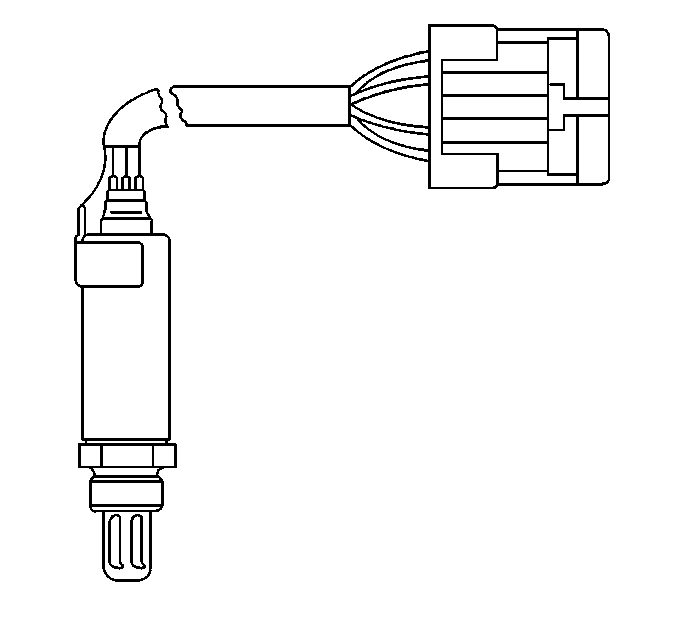
The fuel control Heated Oxygen Sensor (HO2S 1) is mounted in the exhaust manifold where it can monitor the oxygen content of the exhaust gas stream. The oxygen present in the exhaust gas reacts with the sensor to produce a voltage output. This voltage should constantly fluctuate from approximately 100mV (high oxygen content lean mixture) to 900mV (low oxygen content rich mixture). The heated oxygen sensor voltage can be monitored with a scan tool. By monitoring the voltage output of the oxygen sensor, the PCM calculates what fuel mixture command to give to the injectors (lean mixture low HO2S voltage = rich command, rich mixture high HO2S voltage = lean command).

The HO2S 1 circuit, if open, should set a DTC P0134 HO2S Circuit Insufficient Activity Sensor 1 and the scan tool will display a constant voltage between 400 - 500mV. A constant voltage below 300mV in the sensor circuit (circuit grounded) should set DTC P0131 HO2S Circuit Low Voltage Sensor 1 , while a constant voltage above 800mV in the circuit should set DTC P0132 HO2S Circuit High Voltage Sensor 1 . A fault in the HO2S 1 heater circuit should cause DTC P0135 to set. The PCM can also detect HO2S response problems. If the response time of an HO2S is determined to be too slow, the PCM will store a DTC that indicates degraded HO2S performance.
Catalyst Monitor Heated Oxygen Sensor (HO2S 2)
To control emissions of Hydrocarbons (HC), Carbon Monoxide (CO), and Oxides of Nitrogen (NOx), a three way catalytic converter is used. The catalyst within the converter promotes a chemical reaction which oxidizes the HCand CO present in the exhaust gas, converting them into harmless water vapor and carbon dioxide. The catalyst also reduces NOx, converting it to nitrogen. The PCM has the ability to monitor this process using the HO2S 1 and the HO2S 2 heated oxygen sensors. The HO2S 1 sensor produces an output signal which indicates the amount of oxygen present in the exhaust gas entering the three way catalytic converter. The HO2S 2 sensor produces an output signal which indicates the oxygen storage capacity of the catalyst, this in turn indicates the catalyst's ability to convert exhaust gases efficiently. If the catalyst is operating efficiently, the HO2S 1 signal will be far more active than that produced by the HO2S 2 sensor.
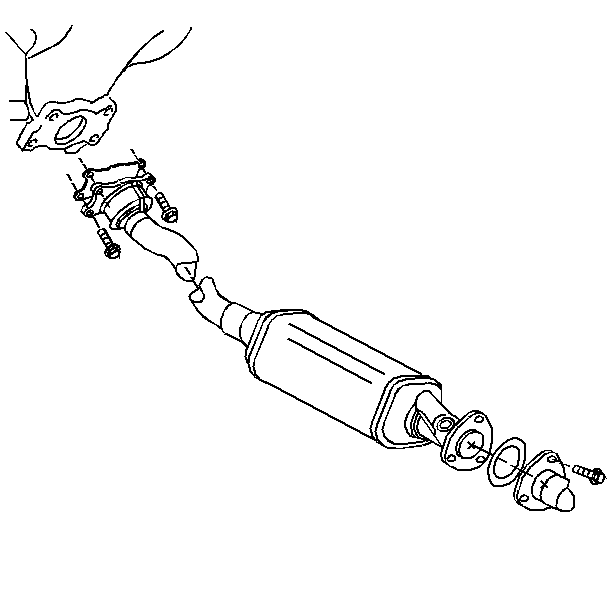
The catalyst monitor sensors operate the same as the fuel control sensors. Although the HO2S 2 sensors' main function is catalyst monitoring, it also plays a limited role in fuel control. If the sensor output indicates a voltage either above or below the 450 millivolt bias voltage for an extended period of time, the PCM will make a slight adjustment to fuel trim to ensure that fuel delivery is correct for catalyst monitoring.
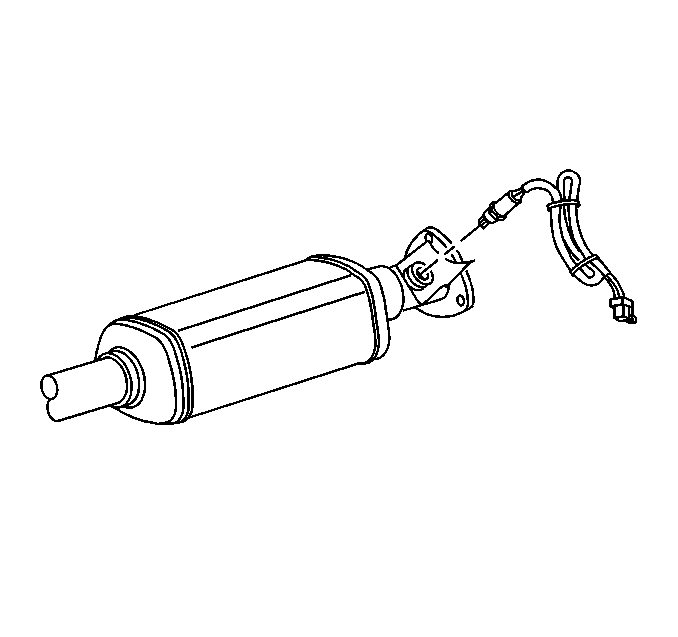
A problem with the HO2S 2 signal circuit should set DTC P0137 HO2S Circuit Low Voltage Sensor 2 , DTC P0138 HO2S Circuit High Voltage Sensor 2 , or DTC P0140 HO2S Circuit Insufficient Activity Sensor 2 , depending on the specific condition. A fault in the heated oxygen sensor heater element or its ignition feed or ground will result in slower oxygen sensor response. This may cause erroneous Catalyst monitor diagnostic results. A fault in the HO2S 2 heater circuit should cause DTC P0141 HO2S Heater Performance Sensor 2 to set.
Throttle Position (TP) Sensor
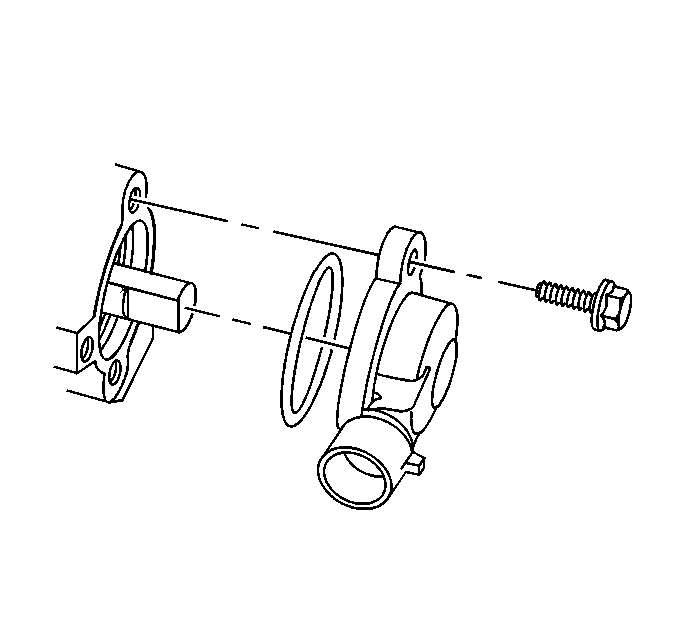
The Throttle Position (TP) sensor is a potentiometer connected to the throttle shaft on the throttle body. By monitoring the voltage on the signal line, the PCM calculates throttle position. As the throttle valve angle is changed (accelerator pedal moved), the TP sensor signal also changes. At a closed throttle position, the output of the TP sensor is low. As the throttle valve opens, the output increases so that at Wide Open Throttle (WOT), the output voltage should be above 4.0 volts.

The PCM calculates fuel delivery based on throttle valve angle (driver demand). A broken or loose TP sensor may cause intermittent bursts of fuel from an injector and unstable idle because the PCM thinks the throttle is moving. A hard failure in the TP sensor 5.0 volt reference or signal circuits should set either a DTC P0122 Throttle Position (TP) Sensor Circuit Low Voltage DTC P0123 Throttle Position (TP) Sensor Circuit High Voltage . A hard failure with the TP Sensor ground circuit may set DTCs DTC P0107 Manifold Absolute Pressure (MAP) Sensor Circuit Low Voltage , DTC P0112 Intake Air Temperature (IAT) Sensor Circuit Low Voltage , DTC P0123 Throttle Position (TP) Sensor Circuit High Voltage , or DTC P0117 Engine Coolant Temperature (ECT) Sensor Circuit Low Voltage . Once a DTC is set, the PCM will use an artificial default value based on engine RPM, engine load and mass air flow for throttle position and some vehicle performance will return. A high idle may result when either DTC P0122 Throttle Position (TP) Sensor Circuit Low Voltage , or DTC P0123 Throttle Position (TP) Sensor Circuit High Voltage is set.

The PCM can detect intermittent TP sensor faults. DTC P1121 Throttle Position (TP) Sensor Circuit Intermittent High Voltage , or DTC P1122 Throttle Position (TP) Sensor Circuit Intermittent Low Voltage will set if an intermittent high or low circuit failure is being detected.
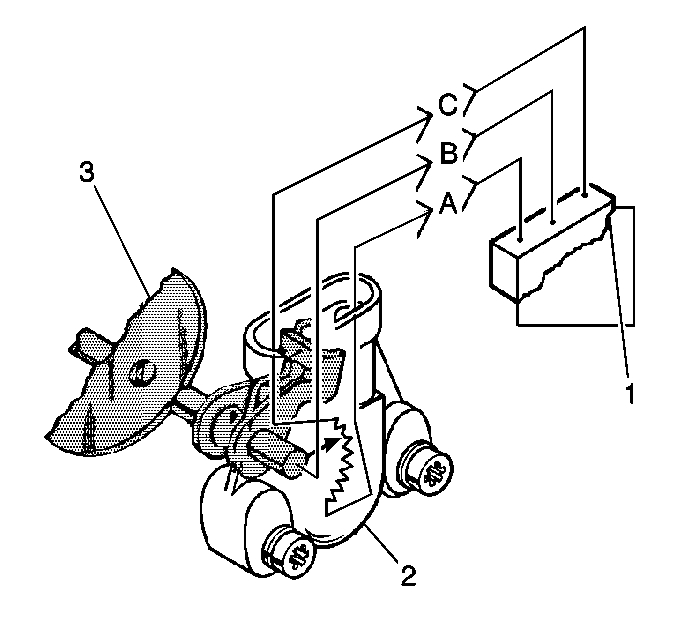
The PCM can also detect a shifted TP sensor. The PCM monitors throttle position and compares the actual TP sensor reading to a predicted TP value calculated from engine speed. If the PCM detects an out of range condition, DTC P0121 Throttle Position (TP) Sensor Performance will be set.
EGR Pintle Position Sensor
The EGR pintle position sensor is an integral part of the EGR valve assembly. This sensor can not be serviced separately from the EGR valve assembly.

